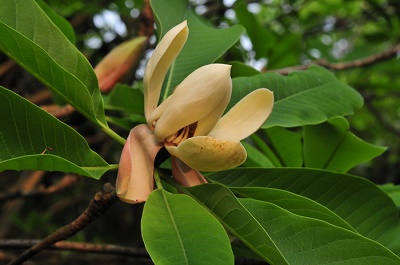Order: Magnoliales
Family: Magnoliaceae
General Overview: Magnolia officinalis, also known as Houpu magnolia or Magnolia bark, is a deciduous tree. It is native to China, where it is widely distributed throughout the country.
Morphological Features: The tree can grow up to 20 meters in height and has a straight trunk with grayish-brown bark. Its leaves are large, leathery, and oval-shaped, while its flowers are white to creamy-yellow and have a sweet fragrance. The fruit is a cone-like structure, which contains small red seeds.
Biological Characteristics: In traditional Chinese medicine, the bark of Magnolia officinalis has been used for centuries to treat various ailments, including anxiety, depression, and digestive disorders. It is valued for its calming and sedative effects, as well as its ability to improve digestion and reduce inflammation. Magnolia officinalis is also a popular ingredient in traditional Chinese herbal formulas, and is often combined with other herbs to enhance its therapeutic effects. Its essential oils are also used in aromatherapy for their calming and mood-enhancing properties. Overall, Magnolia officinalis is a valuable tree with a range of traditional uses and medicinal properties. Its cultural significance and historical use in traditional Chinese medicine make it an important part of Chinese culture and heritage.

